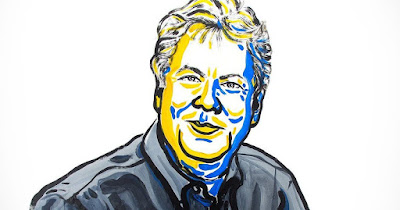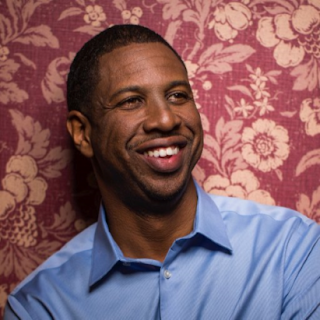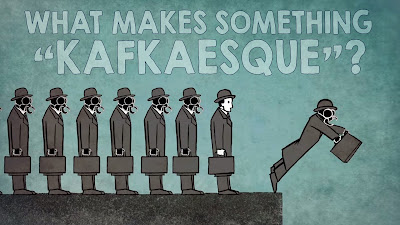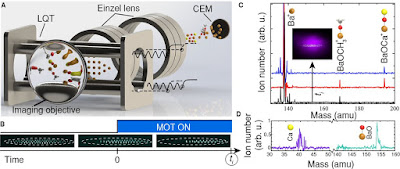LOOKA HERE - A BLACK-OWNED TOY STORE!!!
All Posts (6510)
| Image Source: Link below |
Topics: Education, Nanotechnology, Quantum Mechanics, Semiconductor Technology
Who we are
QuantumWise, Physics Connect Website: QuantumWise.com
My first book is free today and tomorrow!
50,000 fans can't be all wrong! (except about tiny hands trump!) lol
Please check out my black Main Character, Richter!
 |
| Image Source: Scroll.in and NobelPrize.org |
It was a sunny hot day. It was an Alabama sunny hot day in August. I sat in the parking lot of the U.S. Space and Rocket Center debating to myself whether I should go thru with this.
After several minutes, I decided that I came this far, I might as well go all the way. So over my shorts and T-shirt, I placed the thin aluminum style suit on. Not much people noticed me. When I was done and zipped the suit up, I became very warm and unusually uncomfortable. I placed the other accessories on like an old Army pistol belt and boots. The suit was made to resemble a Mercury silver spacesuit. There were no african-american astronauts that were part of the Mercury 7 team, but a person can still dream. They fueled the imagination of many Americans regardless of race and gender.
As I proudly walked to the entrance of the Space and Rocket Center, I then noticed the stares. Little children were pointing their finger at me. All I could do was to wave back at them with a nervous grin.
About sixty years ago, other men wore similar suits like mine. The only difference is that theirs was the real McCoy and they were the real pioneers of this new frontier of space.
It started with a dream from individuals like Copernicus, Katherine Johnson and Werner Von Braun. They had a dream and their contributions helped us to the land a man on the moon.
In pursuing their wildest dreams, there are setbacks and sacrifices. Many lives were lost in the launch pad for both the United States and the former Soviet Union.
But the dream didn’t die.
They learned from their mistakes and paid homage to those we lost who dared to believe.
The dream went on. From it, it launched new innovations and sciences. From it, we built a shuttle and then a space station where human beings has spent over a year in orbit. We have sent probes to Mars and to the very boundaries of our Solar system and beyond.
As I walked through the rocket center taking video I would use later on, people began to come up to me to shake my hand. Some employees, who never saw me thought I worked there also. Every person I saw greeted me with a smile.
Soon my nervousness went away and I did what I determined to do.
My goal is nothing to compare with landing on the moon. But it’s still worthwhile. To show those that anyone, I mean anyone, can fly on a rocket or have impossible dreams. It becomes possible when you begin to believe that you can do it.
I left with a sense of accomplishment and pride.
From the video footage I filmed, I was able to craft a science fiction short film called Opportunity 7.
Dare to Dream.
-Christopher Love
 |
| Image Source: Daily Mirror Original: Ill: N. Elmehed. © Nobel Media 2017 |
Topics: Nobel Laureate, Nobel Prize, Peace
I can't think of a more timely and apropos prize for the current zeitgeist. I hope it has impact.
Link: Nobel Peace Prize
| Image Link: Source below |
Topics: Literature, Nobel Laureate, Nobel Prize
Link: Nobel Prize Literature
Hey guys It's been a long time coming but now its finally paying off
https://www.dropbox.com/s/kgfbzrn34iw835h/GEX%20demo.zip?dl=0
Controls: ASD/ZXC = shoot
Left, Right, Up, = move
| Image Source: Link below |
| Image Source: Link below |
 |
| Image Source: Link below |
 |
| Image Source: Seminar link below |
 |
| Researchers at Columbia University created an evaporation engine, driven by bacterial spores that swell as they absorb moisture from evaporating water. XI CHEN |
 |
| Credit: Joshua Edel |
The author could just be the next big thing in literature AND film
BY BRITNI DANIELLE, MARCH 30, 2017|EBONY
Tomi Adeyemi’s novel, Children of Blood and Bone, hasn’t even been released yet and it’s already headed to the big screen, thanks to a blockbuster deal with Fox 2000. Publishers clamored to snap up the 23-year-old’s novel, reportedly resulting in a “whopping publishing deal,” according to Deadline.
Children of Blood and Bone is the first book in Adeyemi’s fantasy trilogy rooted in African mythology, and has been described by some as “Avatar: The Last Airbender meets Black Lives Matter.” According to the writer’s website, the book follows the Orïshas’ struggle to survive after they’re threatened by a power-hungry king.
Here’s what’s listed so far:
With magic, Zélie’s family could stand against the royal guard.
Her people wouldn’t live in fear.
Her mom wouldn’t have hanged from that tree.
Years after the king wiped magic out of Orïsha, Zélie has one chance to bring it back. To do so, she’ll have to outwit and outrun the crown prince, who’s
hell-bent on erasing magic for good.
Children of Blood and Bone is the first book in Adeyemi’s highly-anticipated series and could set the young writer up to be the next big thing in young adult fantasy. The film adaptation is being produced by the folks who brought moviegoers Twilight, Maze Runner, and The Fault In Our Stars, and Fox 2000 reportedly paid close to seven figures for the book’s film rights.
At just 23, Adeyemi could be an important new voice in both literature and film. The Harvard grad not only gives tips to bourgeoning writers about honing their craft, but the Nigerian-American author has also said she hopes her work will inspire young Black girls.
“I want a little Black girl to pick up my book one day and see herself as the star,” Adeyemi wrote on her blog. “I want her to know that she’s beautiful and she matters and she can have a crazy, magical adventure even if an ignorant part of the world tells her she can never be Hermione Granger.” Something tells me Adeyemi is this close to reaching her goal.
**MY TAKE: Glad to read about Afrocentric book-to-film deals especially in the speculative genres.**
 |
| Image Source: YouTube, see embed |
After breaking away from the Planetary Alliance the planet Otar finds it's self on the brink of ruin. In a desperate move, their leader Rotart makes a foolish attempt to terraform the planet Telderan so that he may claim it and relocate the Otarian race. Ancient oracles have been warning Alliance leaders for years that such an attempt would be made and that it would have catastrophic results for planet Earth billions of miles away. Rayna, High Ruler of the Southern Quadrant of Lazon and J'lore Chief Council of Earth's Guardians have been lifelong friends. Although Earth Guardians are considered outlaws by the government Rayna sympathizes with their cause to save the human race. Earth's Guardians is also aware of the impending disaster for earth but Rayna confirms it. Taz, son of the ruthless dictator of Otar is dispatched to clear Telderan of the handful of inhabitants so that the terraforming process can begin. His harsh and heavy-handed ways do not go down well with the settlers and his father's confrontation with leaders of the Planetary Alliance does not fair any better. Only time will tell if the Planetary Alliance's oracles were right.
